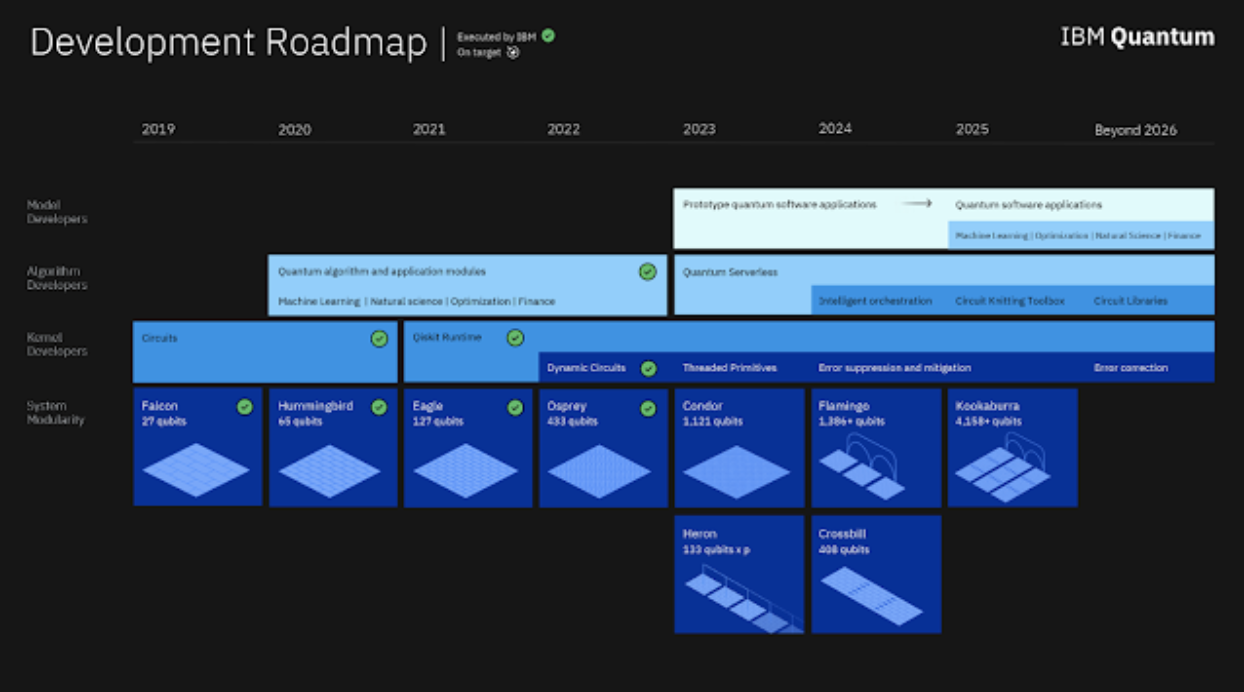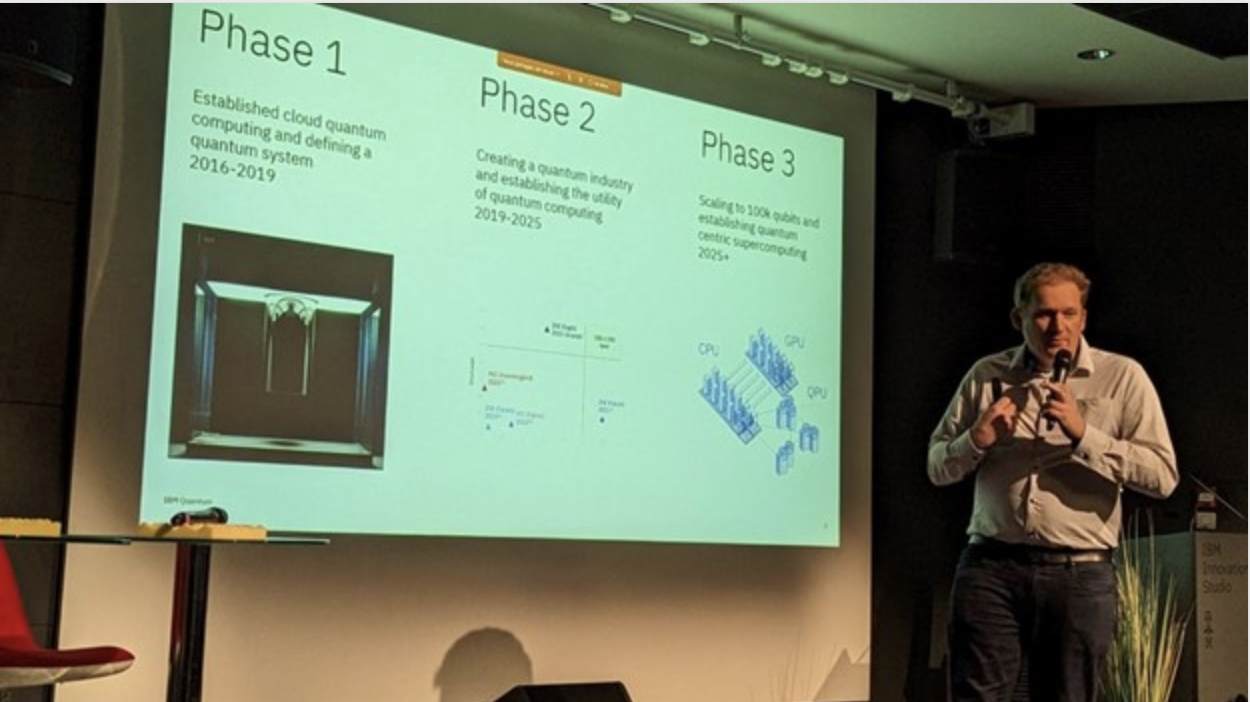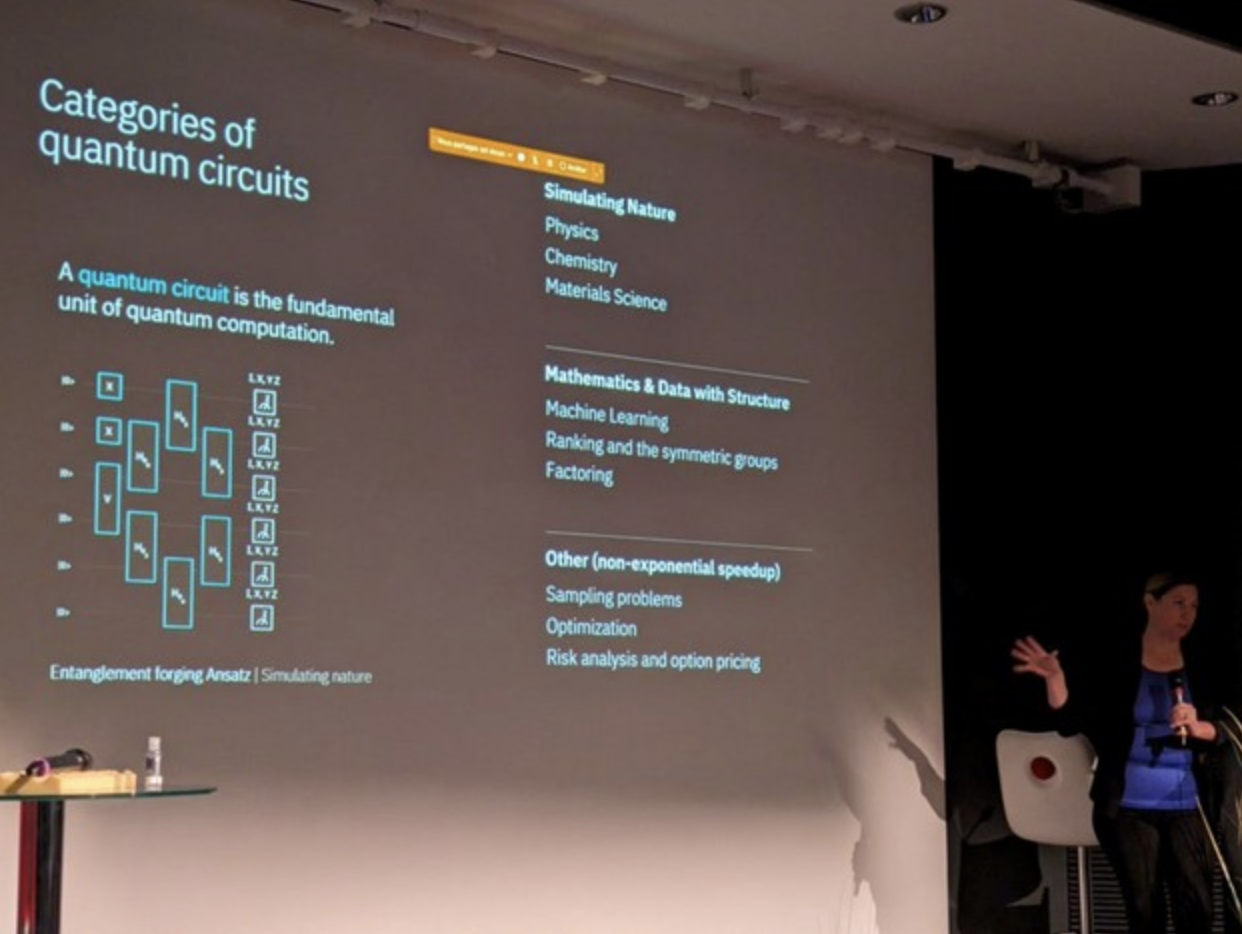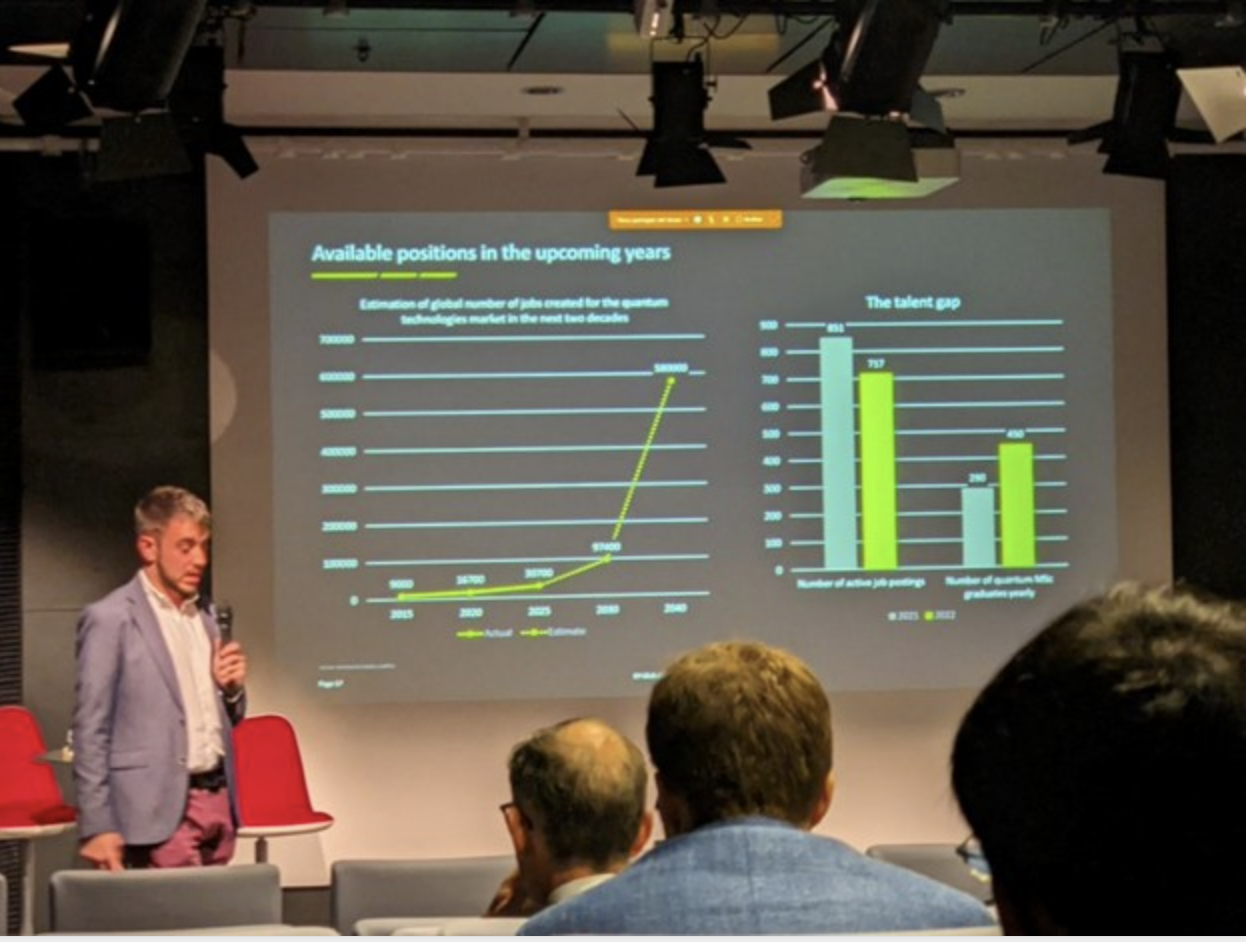IBM invited its partners for three days to the IBM Innovation Lab in Paris, to share progress in quantum as well as provide partners the chance to educate each other, share the progress and state of their projects as well as ample network opportunities.
Here are my four key takeaways from the event:
IBM makes good progress on the innovation of its platform / hardware.
IBM’s VP of Quantum Jay Gambetta was in Paris and re-confirmed that IBM is on track with its goal of reaching 4000+ qubits by 2025, based on the IBM Quantum System Two. For now, the Osprey chip is available with its 433 qubits, later this year Condor (1121 qubits) is slated to become available. At Think 2023 IBM also launched new offerings for quantum, with the IBM Quantum Safe technology getting the most attention.
Figure 1 – The IBM Quantum Development Roadmap

Source: IBM
Most importantly, partners see progress and are confident that IBM is the right partner to provide the underlying hardware platform for their quantum computing projects.
Figure 2 – Jay Gambetta in Paris, May 15th, 2023

Source: Constellation Research
A wide variety of use cases are happening today.
IBM sees five large use cases where quantum is being implemented today, IBM’s Jamie Garcia walked us through the five use cases:
- Aerospace and automotive. Prominent use cases here are customer experience (CX), materials design, structural design and optimization of processes like in manufacturing.
- Financial Services. The popular use cases are evidently fraud detection, pricing of derivatives and options, portfolio optimization and risk analysis.
- Hight Tech. IBM sees seismic imaging, catalysts, supply chain planning and manufacturing scheduling as key quantum use cases.
- Energy, environment, and utilities. Portfolio optimization, grid optimization, risk analysis and options pricing as well as battery design are key use cases for quantum in these verticals.
- Healthcare and life sciences. IBM sees the prediction of disease risk, drug discovery and design as well as protein folding predictions as the most prominent uses cases in these industries.
Figure 3 – Jamie Garcia presenting in Paris, May 16th, 2023.

Source: Constellation Research
Quantum education remains challenging but is making progress.
Education on what quantum computing is, and what its benefits are in academia, government and enterprise is a major challenge. More than one time I heard from attendees referring to the session and saying that they need to explain what quantum is over and over. The challenge is the novelty of quantum and that requires education of executives but also requires education of the workforce. As of today, most attendees held degrees in physics, something not surprising given the nature of quantum. But that needs to change, and other disciplines will have to play a role here. It was also good to see the first quantum education courses coming into place in Canada. The challenge is real and vital for the industry, as for quantum to grow it needs skilled people who can use, explain, and advance quantum technology.
Figure 4 – Rafa-Martin Cuevas presenting in Paris May 17th, 2023.

Source: Constellation
The partner network approach is delivering.
With over 100+ attendees across the whole partner ecosystem – from clients, prospects, services partners, academic partners, and IBM, it was good to see how the network is delivering value for the attendees. On such an innovative and fast pacing technology like quantum, it is key to bring together users, implementors and makers, so they can align on what is feasible and what needs to be done. The learning across the use cases is substantial, even if they come from very different vertical use cases. This is critical at the relatively early phase quantum is still in its adoption across enterprises, governments, and academia. More than a few times attendees said they learned from other industry use cases, partners, enterprises in other countries and regions, and even from academia. It is good for IBM to bring it all together as synergistic learning is substantial. As quantum grows, this approach may not be feasible anymore but for now and the next years to come this is the right approach and IBM deserves kudos for inviting and hosting the forum. With just around 100 attendees, the event is small-scale enough for a lot of networking to happen, as anyone who wants to speak to another attendee has the chance to do so. Additionally, a unique atmosphere is created at an event where almost every attendee is a moderator or panelist, as it breaks the attendee vs presenter barrier effectively – encouraging networking and information exchange on a peer-to-peer basis.
Also checkout the multimedia deliverables, the Wakelet of the event here, the 1Slide summary here and the event video below (and don't miss the Day #1 and Day #2 (with a bonus on how Arizona State is using quantum) summaries here and here).


